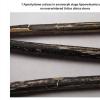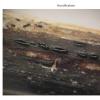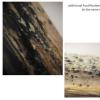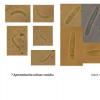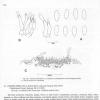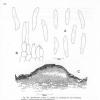
21-12-2025 09:32
Hello.A tiny ascomycete found embedded in wood in

22-12-2025 00:47
Patrice TANCHAUDBonsoir, récolte à proximité du milieu dunaire

21-12-2025 21:32
Pol DebaenstHello, Garden, Burgweg 19, Veurne, BelgiumOn 10/1

21-12-2025 21:40
Isabelle CharissouBonjour, j'aimerais connaitre les références de

21-12-2025 21:31
Pol DebaenstHello, Garden, Burgweg 19, Veurne, BelgiumOn 10/1

21-12-2025 21:31
Pol DebaenstHello, Garden, Burgweg 19, Veurne, BelgiumOn 10/1

20-12-2025 23:08
Patrice TANCHAUDBonsoir, récolte sur sol sablonneux dans l'arri�

20-12-2025 15:47
Mirek GrycHi.These grew on pine wood that was heavily covere
"Rhytisma urticae"
Alex Akulov,
12-07-2011 21:02
 Dear Friends
Dear Friends Sufficiently long time ago in L. Fuckel exiccati I watched the sample of Rhytisma urticae on overwintered Urtica dioica stems. Recently, I've collected in the Carpathians very similar sample. Using the Internet, I found that the modern name of this species - Aporhytisma urticae with anamorph Apomelasmia urticae. Unfortunately, the available information about this species is too poor.
In my sample I found conidia, which are similar to Melasmia representative and other type of spores also.
I have no literature to solve problems with the collected sample. If someone could send me a description of Aporhytisma urticae, as well as express your opinion about this sample, I would be very grateful!
Alex
Alex Akulov,
25-08-2011 00:01

Re : "Rhytisma urticae"
Dear Friends
Today I received a response from Dave Minter with more in detailed datas about this species. He wrote:
Aporhytisma urticae is not so easy. It's not in Dennis (British Ascomycetes) and it's not in the Ascomycetes volume of Champignons de Suisse. Petrak wrote about it in Sydowia 24: 252 (available from Cyberliber). Arx & Muller in Beitrage zur Kryptfl. Schweiz 11: 373 (available from Cyberliber) redisposed it as Diaporthopsis = Diaporthe. There's a photograph of A. urticae on the Internet [http://www.fundkorb.de/?Fundkorb:Acrospermum_compressum%26nbsp%3B_Tode%3AFr.] which looks rather like your fungus.
Please, see also attached files - pages from Sutton's Coelomycetes (1980), with description and illustration of anamorph.
Alex
Today I received a response from Dave Minter with more in detailed datas about this species. He wrote:
Aporhytisma urticae is not so easy. It's not in Dennis (British Ascomycetes) and it's not in the Ascomycetes volume of Champignons de Suisse. Petrak wrote about it in Sydowia 24: 252 (available from Cyberliber). Arx & Muller in Beitrage zur Kryptfl. Schweiz 11: 373 (available from Cyberliber) redisposed it as Diaporthopsis = Diaporthe. There's a photograph of A. urticae on the Internet [http://www.fundkorb.de/?Fundkorb:Acrospermum_compressum%26nbsp%3B_Tode%3AFr.] which looks rather like your fungus.
Please, see also attached files - pages from Sutton's Coelomycetes (1980), with description and illustration of anamorph.
Alex

